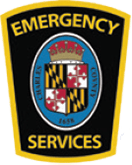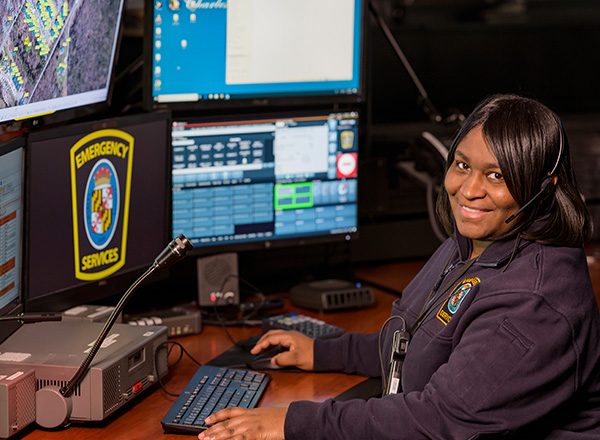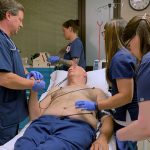About Charles County 9-1-1
 Charles County 9-1-1/Public Safety Communications serves as the primary public safety answering point for Charles County, Maryland, a suburban and rural community south of Washington, DC. The center employs 34 emergency telecommunicators, known in Maryland as “9-1-1 specialists.”
Charles County 9-1-1/Public Safety Communications serves as the primary public safety answering point for Charles County, Maryland, a suburban and rural community south of Washington, DC. The center employs 34 emergency telecommunicators, known in Maryland as “9-1-1 specialists.”
County Population (2020 census):
166,617
Annual 9-1-1 calls (2020):
73,370
Annual Non-Traumatic
Cardiac Arrests (2020):
202
CHALLENGE
![]()
Every time a 9-1-1 specialist in Charles County, Maryland, answers a 9-1-1 call for cardiac arrest is an opportunity to make a difference by providing life-saving telephone CPR instructions.
“The chance of survival from cardiac arrest decreases by ten percent with every minute that passes without CPR,” says Kevin Seaman, MD, medical director for the county’s 9-1-1 Center and EMS program. “The process of getting units started, getting units to the scene, starting CPR, defibrillation— that can take nine minutes, or even longer.”
In other words, whether or not the Charles County 9-1-1 specialist quickly recognizes a cardiac arrest and coaches the caller to provide CPR can mean the difference between life and death. That’s why Telecommunicator CPR (T-CPR) is recommended by cardiac arrest experts as one of the most effective ways to improve survival rates in a community.
Yet sometimes a telecommunicator could go weeks, even months, without taking one of these critical calls. The county’s leaders recognized that taking a CPR recertification course every two years was not preparing its 9-1-1 specialists to confidently, consistently and quickly recognize every cardiac arrest and immediately coach callers to start chest compressions.
SOLUTION
![]() As a longtime faculty member for the renowned Resuscitation Academy, Dr. Seaman was intrigued by the announcement that the academy had collaborated with RQI Partners, a partnership of the American Heart Association and Laerdal Medical, to create RQI-Telecommunicator: a low-dose, high-frequency, blended-learning quality improvement program designed to measure and improve public safety telecommunicator competency and performance in the delivery of T-CPR.
As a longtime faculty member for the renowned Resuscitation Academy, Dr. Seaman was intrigued by the announcement that the academy had collaborated with RQI Partners, a partnership of the American Heart Association and Laerdal Medical, to create RQI-Telecommunicator: a low-dose, high-frequency, blended-learning quality improvement program designed to measure and improve public safety telecommunicator competency and performance in the delivery of T-CPR.
A New Approach to Training
Prior to implementing RQI T-CPR in August 2019, CPR training for most Charles County 9-1-1 specialists meant taking a CPR course once every two years. The training did not focus on their roles as emergency telecommunicators and did not address the fact that after a few months, research shows that skills that are not frequently used begin to decay.
With RQI T-CPR, Charles County 9-1-1 specialists participated in quarterly cognitive learning activities online, on their own schedule. Because these modules take only 15 minutes, they are easily performed while on-duty, eliminating the hassle of scheduling time off or incurring overtime costs. Each quarter, the activity focused on a different critical aspect of T-CPR, such as the science of resuscitation or caller management.
“I remember a question during the baseline process that asked our 9-1-1 Specialists when they last had to do telephone CPR. The answers were all over the board, from never to yesterday,” says Tony Rose, deputy director of emergency services for Charles County. “The answer now is ‘at least quarterly.’ Even before we saw improvements in outcomes, we could see that we were more prepared.”
Charles County 9-1-1 specialists also performed T-CPR simulations, conducted by an RQI T-CPR quality manager, which put the telecommunicator through different situations they could face during an actual 9-1-1 call. Like the cognitive activities, the simulations focused on different topics, including calls that initially present as a fall and seizure or ones in which callers have difficulty positioning the patient for CPR. After each simulation, the telecommunicator and the RQI T-CPR quality manager review the call to give the telecommunicator immediate feedback.
RESULTS
![]() RQI T-CPR is more than a training program—in addition to providing individual online learning activities and real-time simulation and feedback, RQI T-CPR also helps Charles County measure and evaluate its performance on actual cardiac arrest calls. Assessing critical key performance indicators has focused Charles County 9-1-1 on the aspects of T-CPR that impact patient survival—and also shown them the impact RQI T-CPR is having on the community.
RQI T-CPR is more than a training program—in addition to providing individual online learning activities and real-time simulation and feedback, RQI T-CPR also helps Charles County measure and evaluate its performance on actual cardiac arrest calls. Assessing critical key performance indicators has focused Charles County 9-1-1 on the aspects of T-CPR that impact patient survival—and also shown them the impact RQI T-CPR is having on the community.
Saving More Lives
Overall, the 9-1-1 specialists have continued to meet or exceed their goals for the American Heart Association’s T-CPR key performance indicators, showing significant improvement on some. Despite the COVID-19 pandemic and its impact on what questions 9-1-1 specialists asked, they continued to make progress in more quickly recognizing cardiac arrest calls. In the third quarter of 2020, they averaged just 71 seconds from the start of the call to the recognition of arrest—a 28% decrease since the previous year. That led to a significant decrease in the time before initiating telecommunicator-directed CPR as well.

In addition, the rates of bystander CPR overall and public application of an AED have increased.
Although still early in the implementation, Charles County has already seen positive results in overall outcomes as well, with its number of cardiac arrest survivors discharged to home increasing from 5 in 2019 to 11 in 2020.
More Confident and Prepared
Behind those results is increased confidence among the 9-1-1 specialists that no matter what the next call brings, they are prepared to handle it, according to Captain Antonella Volpe, who oversees training and quality improvement for Charles County 9-1-1.
“They’re more confident, their comfort level has greatly increased,” Capt. Volpe says. “I hear it when we pull the audio of the calls to review them.”
The shift from biannual CPR courses to more frequent, targeted training should serve as a model for the future of 9-1-1 and EMS education, says Dr. Seaman, who has also overseen the implementation of RQI and low-dose, high-frequency CPR training for Charles County’s EMS clinicians.
“If you look at the best basketball players in the world, if they only practiced once every two years, they could probably still beat me, but they wouldn’t have achieved what they have achieved,” explains Dr. Seaman, former executive director of the Maryland Institute for EMS Systems and a member of the American Heart Association’s T-CPR Taskforce. “I would say this is the biggest revolution in dispatch education and EMS education in my career.”
For more information, visit RQIPartners.com/RQIT









